Japanese | English
Japan Telescope Manufactures Association
Welcome to the sky-watching world.
Japan Telescope Manufactures Association
• Tools to prepare to enjoy star gazing.
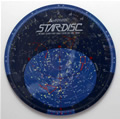
(1) Star plate
The starry sky looks different according to the season and time. Imagine the shape and arrangement of the constellations confirming the location with a star plate before watching the sky.
(2) Your own eyes
First, look the night sky with your own eyes. You can see the constellations and the Milky Way etc. in a wide range.
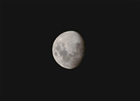
(3) Binoculars
They are suitable to look at a relatively bright body. They are well –suited to figure out the entire picture of a comet approaching the earth. Beyond that, they are right for looking a bright and rather big galaxy such as the Pleiades star cluster (Taurus), a planet such as Jupiter, or a satellite such as the moon.
(4) Astronomical telescope
With an astronomical telescope, you can observe enlarged planets, the moon, galaxy, stellar cluster etc. You can watch satellites of Jupiter and the ring of Saturn.
• How to choose binoculars
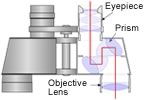
The affinity of binoculars is the convenience compared to the astronomical telescope. You can wander the sky as you like. Binoculars are used for ordinary use. Here we introduce how to choose them on the premise of using them for observation of celestial body.
(1) Gauge
The larger the gauge is, the brighter the body looks. If you would like to observe a celestial body, choose a big gauge without question. But, too big of a gauge offers you so heavy binoculars that you have difficulty in using them. For beginners the gauge should be 30mm-50mm. If you would like to do in earnest, a gauge more than 50mm is needed.
(2) Magnification ratio
The needed magnification ratio depends on the purpose. If you would like to have a relaxing view, choose less than 10 magnifications. If the magnification is over 15, you have to fix it to avoid wobbling. To see the whole object, use a tripod etc.
(3) Weight
The adequate weight depends on the person, male, female and age. Hold real binoculars and feel them at the store.
(4) Price
Decide the budget roughly and consult at a specialized shore etc. and buy ones.
• How to choose an astronomical telescope
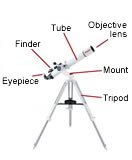
You might want an astronomical telescope to have a real joy of observation celestial body such as a planet, a galaxy, galactic clouds, stellar cluster, double stars and a variable star. Here we introduce how to choose an astronomical telescope for those who would like to buy an astronomical telescope, but do not know how.
(1) Type of astronomical telescopes
There are two types of astronomical telescope, refracting telescope and reflecting telescope. They have drawbacks and advantage, so please consult the shop and decide.
(2) Magnitude of the gauge
The larger the gauge is, the clearer you can see the body. However, when the gauge becomes large, it becomes harder to handle. Choose it considering your physical strength and frequency of usage.
(3) Finder
More than 30mm of finder would be preferable. If it is less than 30mm you would have trouble because you don’t see dark stars. Choose carefully.
(4) Eyepiece lens
Having two kind of eyepiece lenses, low magnification (30-60) and high magnification (120-250) is enough. If you need the other magnification lens, please buy them after.
(5) Never fail to check them at a shop.
You should choose an astrometric telescope critically at specialized store. First, put a brochure on backorder and study them. Based on what you see, visit a shop and choose with the following in mind. You cannot go wrong.
• First check the mount!
When the mount is weak, a wind or a touch wobbles the image and you cannot observe the object well to those who would like to take pictures. Moreover, make sure whether you can move it smoothly. The mount must be sustainable to the weight to the telescope.
• Next, a tripod
After you buy a mount, choose a tripod. The tripod should support all the weight of a telescope and mount, so check the solidity of the tripod thoroughly.
• Finder
Look at the far view through a finder. Is the image bright and clear? If you cannot see the far view bright and clear, it is not good for the night sky. Confirm that the gauge is over 30mm.
• Ocular lens
If you buy them in package deal, you can buy a low magnification lens and a high magnification lens at the same time.
• Telescope
Finally, look at the far view and check how you can look at the image.
• Accessories
There are various kind of accessories, but if I choose one, it would be a polar telescope. Some equatorial mounts do not have a polar telescope. You might be puzzled whether you should buy a polar telescope. A polar telescope is useful to find the Polaris and to align the equatorial mount.
You can enjoy stars in an urban city. You should aim at fine weather after a heavy rain.
You decide prematurely that you cannot see stars in urban cities, don’t you? In fact, you can see stars. You can trace the main constellations when it is fine. Look for a place where there is little light. At first, you cannot see anything due to the darkness, but as time advances, you can see more stars.
Especially recommended is fine weather after a heavy rain, because the dust in the air dropped and you can see clearer sky. FYI, the clearest sky in Tokyo or urban cities is after a typhoon, New Year’s Day and the period of the Obon festival.
![]()
About a compass
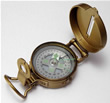
A compass is a must when you cannot understand the direction. If you do not know the direction, you cannot use a star plate. Check where north is by a compass first. When you stand toward north, your right hand is in the east. But if you lie down on your back, putting your head to the north, your left hand is in the east.
The right and left depend on your position of lying down. Be careful not to confuse left hand - right hand. (The first step of sky-watcher might be that you come to know the direction independent from a compass.)
![]()
To give a star the name of yours

I’ll tell you how you put your name to a star when you find a new star.
An international organization which approves the naming of a star, International Astronomical Union, has such strict rules that they do not bestow your name on a star. The way of naming depends on the kind of the stars.
The conclusion is that the stars which have the name of the discoverer are comets only. Nowadays Comet Hyakutake, which was discovered by Hyakutake of Kagoshima and approached the earth so closely, and Comet Hale-Bopp, which is named after Hale and Bopp of America and are said to be the biggest in this century, are famous. Fixed stars are usually not allowed to be new findings. A nova or a supernova does not have the finders’ name because they are named based on the name of an era or hieroglyphics even though they are certified as new stars.